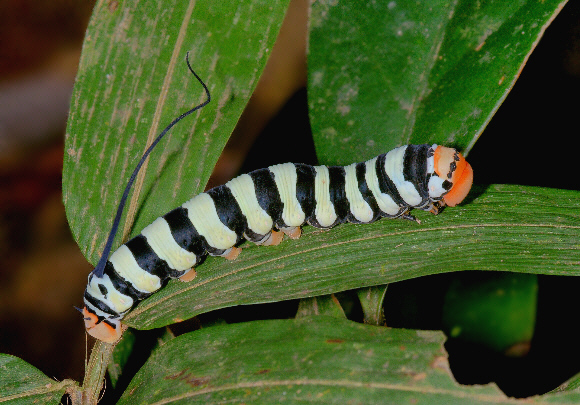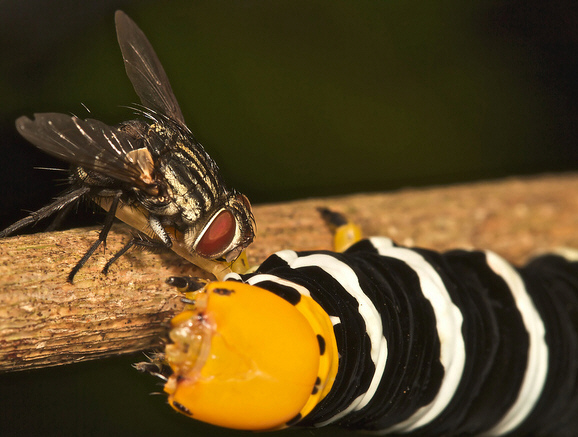
Introduction
The family Sphingidae comprises 200 genera and about 1200 known species worldwide, of which about 150 are placed in the tribe Dilophonotini, which has its stronghold in the neotropical region.
Isognathus leachi is found in Venezuela, Ecuador, Peru and Brazil.
Habitats
This species is found in secondary and primary forest, at elevations between about 200-500m.
Lifecycle
The larval foodplants of this species are Allamanda and Plumieria species (Apocynaceae).
The bold pattern and long whip-like tail of the larva sends a clear message to potential predators “leave me alone!”. It is an example of aposematic colouration, whereby a prey species conveys to predators a visual warning that it is poisonous or dangerous and not for consumption. Unfortunately in practice it has little effect, as Paul Bertner describes:
“I began snapping away obliviously when our guide Artour spotted the tachinid fly circling around the caterpillar. The extremely long tail of this species appears to serve a defensive function. As the fly landed close to the rear the caterpillar would flick its tail, dislodging the fly to prevent it from ovipositing its eggs. The fly undeterred walked up the body until it was close to the head and out of range of the tail where it began to lay eggs. It seemed to prefer the posterior end of the caterpillar for some reason as it kept on trying to move back there, perhaps laying too close to the front might kill the caterpillar faster and thereby not leave enough time for the larvae to mature, whereas the rear of the caterpillar may not house such vital organs to be destroyed by the larvae. The long orange ovipositor of the fly can be seen quite clearly in the photo. Kanuku mountains, Guyana”.

Adult
The adult moth has dark brown forewings, with a bark-like pattern of grey and black streaks. The hindwings are bright orange-yellow, with broad dark brown margins.
